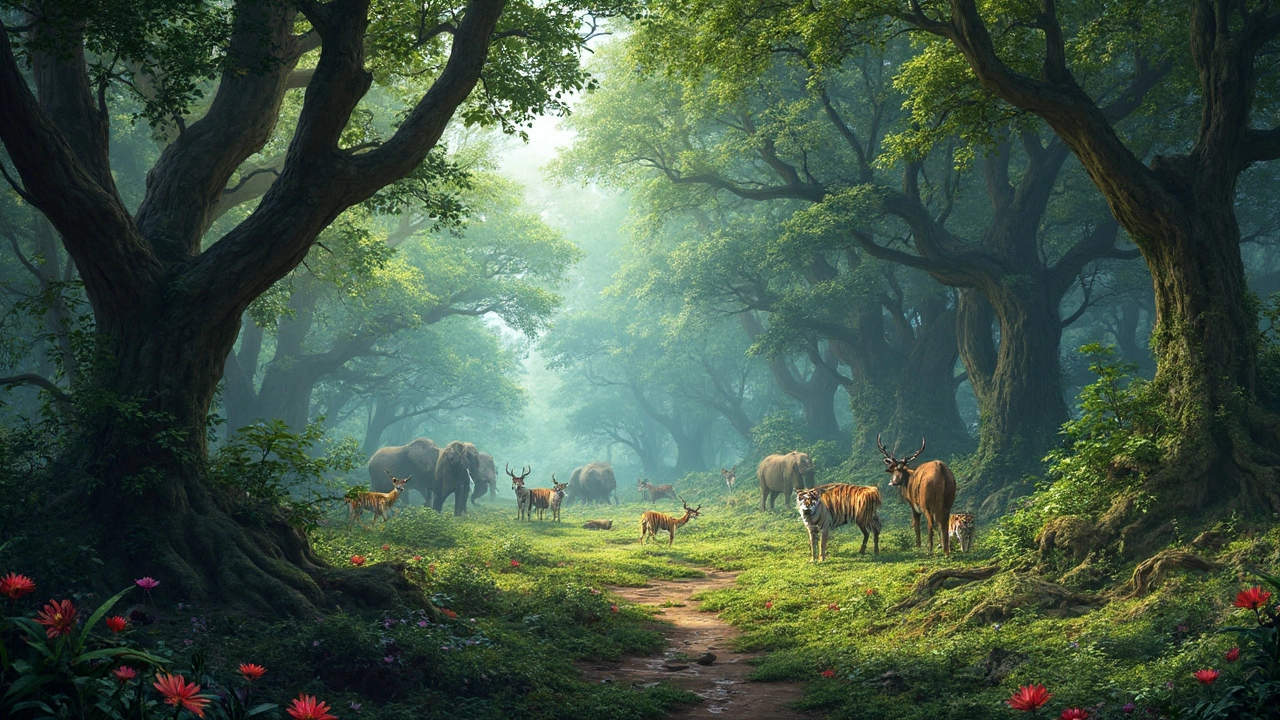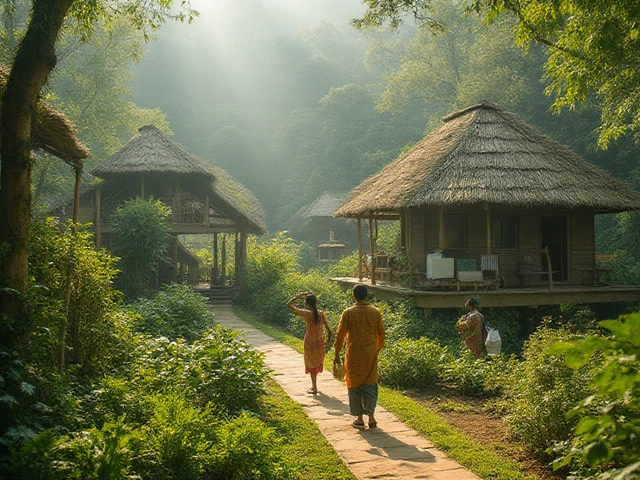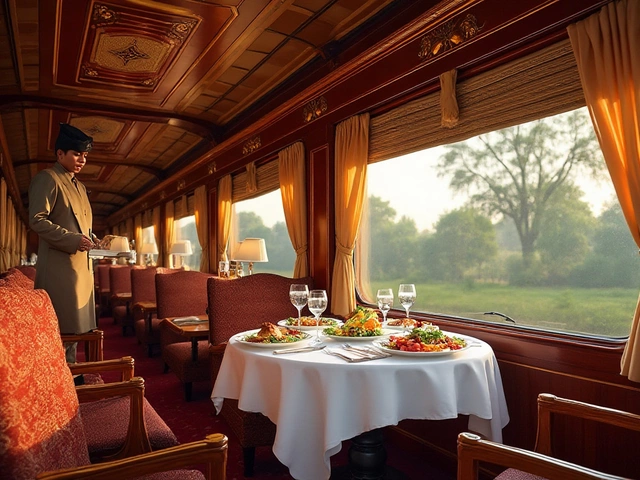Wildlife sanctuaries have this reputation as being ultimate safe zones for animals, the perfect getaway from human-induced troubles. But how honest is this notion? It’s a complex situation. You’d think these areas are impenetrable fortresses for our furry and feathered friends, but let me tell you, it’s not always the case.
Despite their purpose to nurture and protect, sanctuaries face some pretty nasty challenges. Poaching is still rampant, unfortunately. It's not uncommon for these places to be under-resourced, sometimes lacking the funds or manpower to keep everything truly safe and sound. Sometimes, even the boundaries drawn to keep animals in and threats out aren't strong enough.
- Purpose of Wildlife Sanctuaries
- Current Threats Inside Sanctuaries
- Human Impact and Conservation Efforts
- Success Stories and Failures
- Ways to Support Sanctuaries
Purpose of Wildlife Sanctuaries
So, you must be wondering, what exactly are wildlife sanctuaries all about? At their core, these areas are meant to protect animals and their habitats. They’re like the superheroes of conservation, stepping in to save species from the brink of extinction. The idea is pretty straightforward: give animals a safe place to live where they’re not constantly threatened by us humans.
Why Do We Need Them?
Why bother setting up these sanctuaries in the first place? Easy—habitat loss and human interference. Every year, more forests are chopped down, and urban areas keep spreading like crazy. This leaves animals with nowhere to go. Wildlife sanctuaries offer these creatures a refuge where they can live in peace without dodging bulldozers or pollution. Plus, they’re a kick-starter for breeding programs, helping endangered species make a comeback.
The Conservation Focus
A lot of sanctuaries aim to preserve biodiversity. This isn’t just a fancy word for saving all sorts of animals. It also involves maintaining the complex web of life that includes plants, insects, and even the soil. A balanced ecosystem means healthier wildlife and fewer species dropping off the face of the earth. It’s about keeping everything in check.
Real World Impact
Want a success story? Let's talk about the Sunderbans Tiger Reserve in India. Thanks to this sanctuary, the Bengal tiger population has seen a positive shift, showing what focused conservation can accomplish. Still, despite these happy tales, not every sanctuary is a smashing success. Challenges like lack of funding can hinder progress.
Overall, wildlife sanctuaries are a big win for conservation, but they’re not the ultimate solution. Continuous efforts and community support are crucial for these safe havens to deliver what they promise. But hey, it’s a start!
Current Threats Inside Sanctuaries
Many believe that a wildlife sanctuary is an impenetrable safe zone, but in reality, even these refuges face serious threats. One of the most notorious issues is poaching. Despite efforts to combat it, poaching remains a persistent thorn in the side. Hunters often ignore sanctuary boundaries, targeting animals for their valuable parts like ivory or fur, which unfortunately still fetch high prices in illegal markets.
Another challenge is habitat destruction. Human activity, like logging and mining, sometimes spills over into these protected areas. This not only fragments the habitat but also disrupts the delicate biodiversity within the sanctuary's ecosystem. For instance, increased human presence can lead to animals straying into human territories, which is risky for both parties.
Resource Limitations
A lack of resources is another significant hurdle. Many sanctuaries struggle with funding, which hampers their ability to maintain and secure their boundaries. Adequate equipment, staff, and technology are essential for effective monitoring and protection but are often in short supply. This makes it challenging to enforce anti-poaching measures and conduct regular surveillance.
Invasive Species
Invasive species can also threaten the ecological balance of sanctuaries. When non-native species enter, they compete with or prey on native species, often leading to a decline in biodiversity. This is a sneaky threat since it doesn’t always make headlines but can have long-term negative impacts.
| Threat | Impact |
|---|---|
| Poaching | Decreases animal populations, disrupts ecosystem balance |
| Habitat Destruction | Loss of animal and plant species, reduced sanctuary effectiveness |
| Resource Limitations | Inadequate surveillance, reduced protective measures |
| Invasive Species | Threatened native species, reduced biodiversity |
Addressing these challenges requires a multi-faceted approach. Increased funding, stricter law enforcement, and innovative conservation techniques can fortify these wildlife sanctuaries against threats. Collaborative efforts between governments, NGOs, and local communities are also crucial in safeguarding these vital refuges for animal safety in the long run.
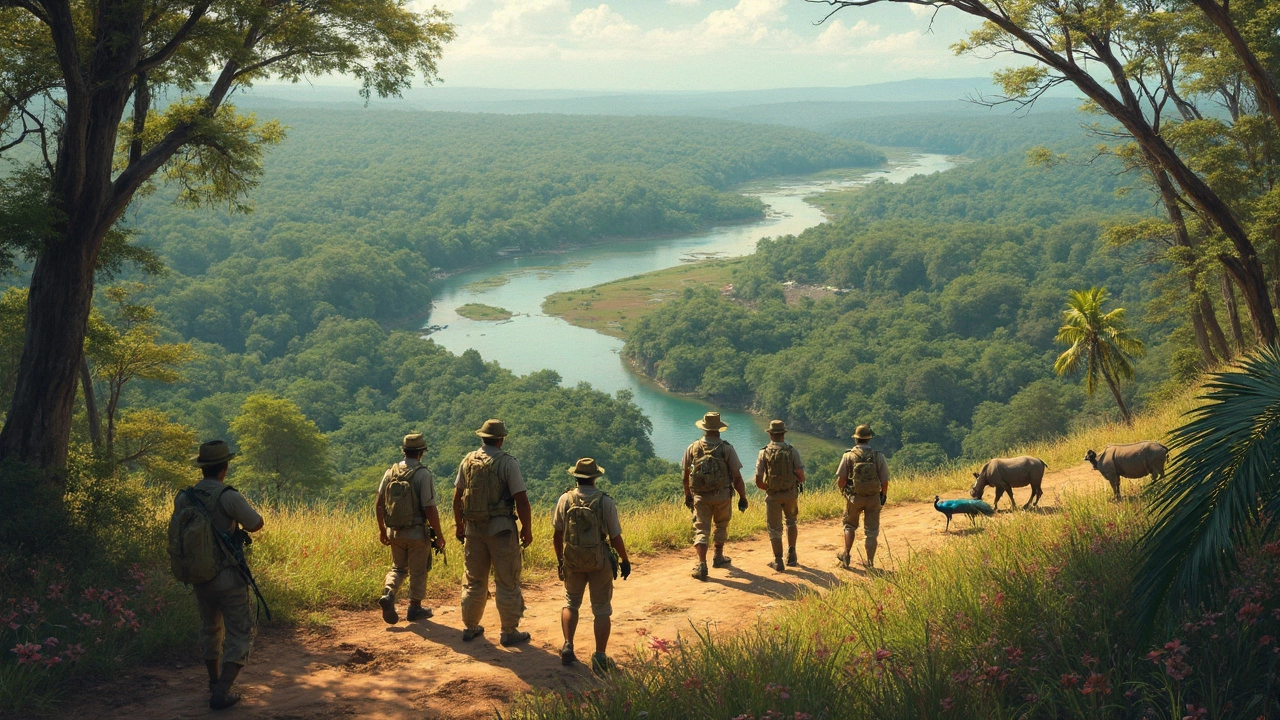
Human Impact and Conservation Efforts
Alright, let's dive into how humans are both making waves and working hard in wildlife sanctuaries. It's a bit of a mixed bag. On one hand, we've got the mess that some human activities bring, and on the other, there's a lot of good stuff happening too.
Negative Impacts
Sadly, some sanctuaries are feeling the heat from people moving into nearby areas. Urban expansion and agriculture can mess with animal territories, leaving them with less room to roam. Plus, infrastructure projects—think roads, dams—sometimes cause unwanted disturbances.
And let's not forget about the infamous poaching. Despite strong regulations, it can remain a tough nut to crack, especially when animals in a sanctuary are valuable or endangered.
Conservation Triumphs
Thankfully, humans aren't all bad news. In many places, extensive conservation efforts are underway to keep animals in wildlife sanctuaries thriving. Organizations work tirelessly to improve conditions within these spaces. From better funding to more patrolling rangers, there’s a lot happening behind the scenes.
For example, some sanctuaries are seeing success using tech innovations like drones for surveillance to combat poaching. Community engagement programs also play a big part. Educating local communities about wildlife importance fosters better coexistence between people and animals.
Collaborative Efforts Count
Collaborations between governments, NGOs, and local communities are key. When everyone pitches in, resources are better utilized. This way, we can ensure the future of both the animals within these refuges and the sanctuaries themselves.
| Conservation Strategy | Success Rate |
|---|---|
| Community Engagement | 70% |
| Tech Surveillance | 80% |
So, while human impact is a double-edged sword in wildlife sanctuaries, the conservation efforts show promise. With ongoing collaboration and innovative thinking, sanctuaries can genuinely offer safe refuge to their precious inhabitants.
Success Stories and Failures
When you think about wildlife sanctuaries, the thought of success stories might give you that warm, fuzzy feeling. Take for instance the amazing turnaround of the American Bison. Thanks to the efforts within various sanctuaries, their numbers have rebounded from near extinction to around 20,000 in the wild today. That's pretty impressive!
Another shining example is the return of the grey wolf in Yellowstone National Park. After being reintroduced, they've become a crucial part of the ecosystem, balancing out the elk population, which in turn helps vegetation thrive. It's a perfect display of how intentional conservation can make a world of difference.
However, not every story is wrapped up in a pretty bow. Despite best efforts, the Northern White Rhino's future is still grim. Wildlife sanctuaries have tried artificial breeding techniques, but with only two females left, the outlook isn't optimistic. It's a harsh reminder of how delicate some species have become.
There are also instances where sanctuaries run into trouble because of limited resources and poaching. The Kaziranga National Park, famous for its rhinos, often struggles with poaching incidents. Although they have strict policies and armed guards, keeping these magnificent creatures protected is an ongoing battle.
The key takeaway? While sanctuaries have their wins, they also have regulation and resource challenges that can lead to significant losses. It's a mixed bag, reminding us that conservation is a continuous process requiring both support and innovation.
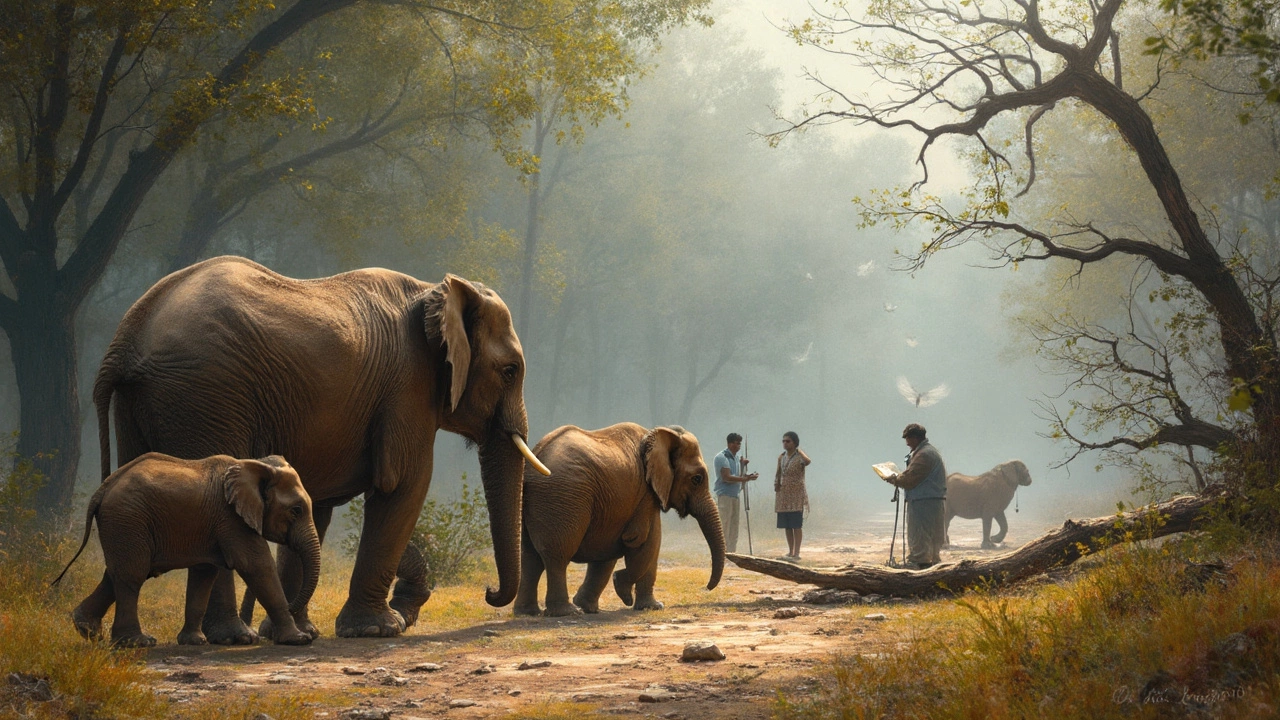
Ways to Support Sanctuaries
Wondering how you can make a difference for our wildlife sanctuary heroes? There's more to it than just showing up at the gate with your camera. Active involvement can come in many forms, whether you’re an animal lover, a volunteer spirit, or a passionate donor. Here's a breakdown of how you can pitch in.
Become a Volunteer
Volunteering is a hands-on way to support wildlife sanctuaries. Many sanctuaries need help feeding animals, cleaning enclosures, and even assisting with administrative tasks. You don't have to be a zoologist or biologist—a genuine interest in animal welfare goes a long way. Plus, it provides a great opportunity to learn about the animals and how sanctuaries operate.
Donate Financially
Money talks, and many sanctuaries run on tight budgets. Your donations can fund better facilities, buy food supplies, or even sponsor vet care for sick animals. Some sanctuaries even offer the option to sponsor a specific animal, allowing you to directly contribute to its care.
Adopt, Don’t Shop
Consider adopting animals from sanctuaries. Sometimes animals can't be released back into the wild and need loving homes. By choosing adoption over purchasing animals from breeders or pet stores, you're directly supporting the work of these sanctuaries.
Spread the Word
Use your voice and networks to raise awareness about conservation efforts. Encourage friends, family, or social media followers to support sanctuaries. The more people know, the more likely they are to get involved.
Support Through Goods
If you can't afford monetary donations, consider providing goods like food items, medicine, or equipment. Some sanctuaries have specific needs lists, so it's worth checking with them first to know what's most helpful.
By diving into any of these actions, you're not just helping animals. You're part of a broader movement to create safe environments where they can thrive, turning the mission of maintaining safe sanctuaries into a reality.
